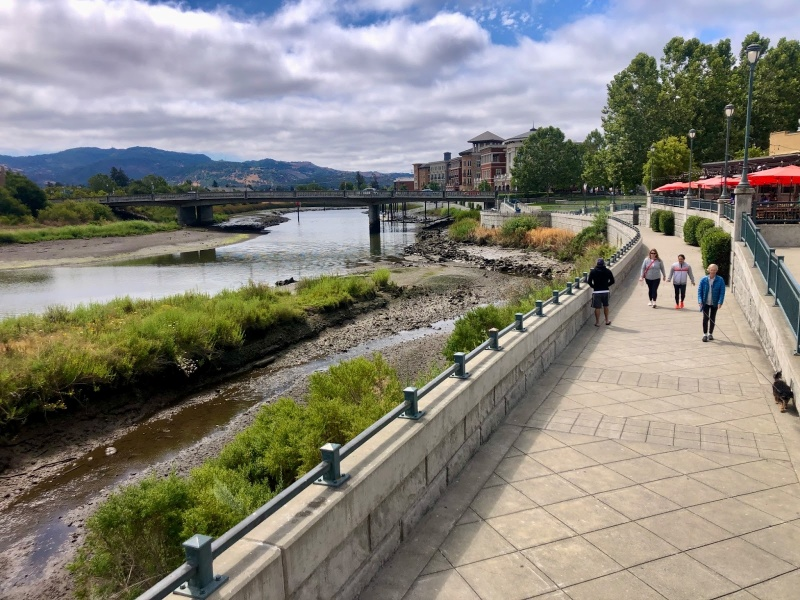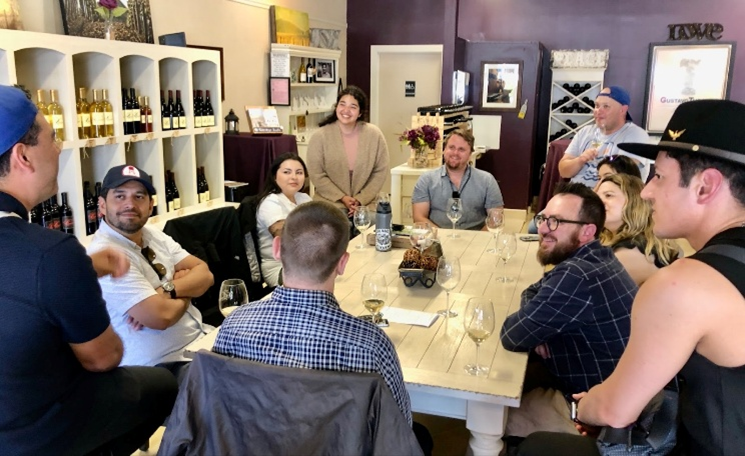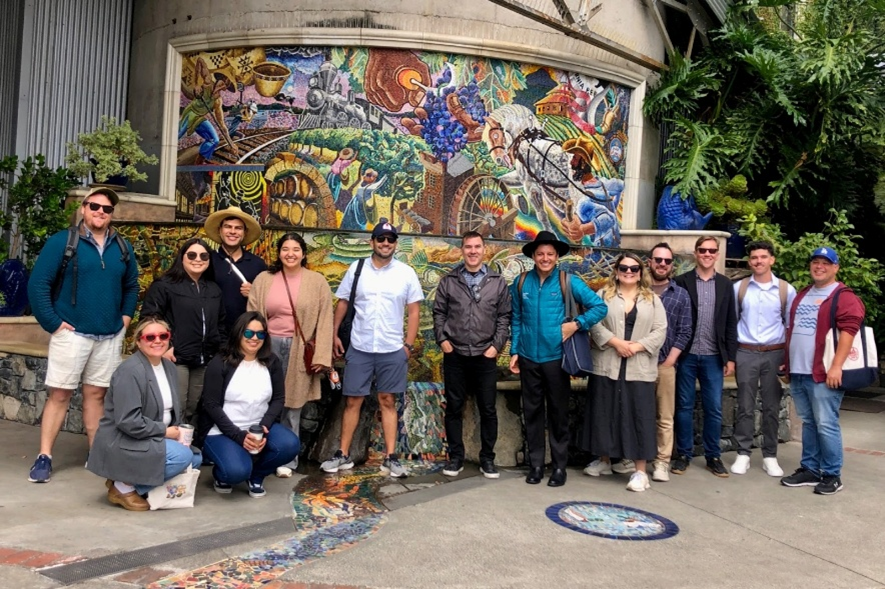By James Rojas, Urban Planner, Founder of Place It!
Through its thriving wine industry and thoughtful urban planning and design, Napa has become an optimistic and dynamic city, though this was not always the case. On our recent tour, organized by Latinos and Planning, fifteen urban planners from the Bay Area and Sacramento explored how Latinos have influenced and shaped this place, not only as vineyard workers but also as community builders and cultural contributors.

The tour was led by Brendan Hurley, Program Coordinator for the City of Napa’s Economic Development Division, and Alberto Esqueda, who grew up in Napa and shared personal insights into its evolving landscape.
Napa is home to a vibrant Latino community, now nearly 40% of the population. Families like Alberto’s, originally from Michoacán, Mexico, have found both prosperity and belonging through their deep connection to wine culture.
Together, Brendan and Alberto wove the city’s story through both professional expertise and lived experience.
Napa’s roots run deep: first settled by Native Americans, then shaped by Spanish explorers and Mexican settlers, the city grew thanks to its strategic location on the Napa River and access to abundant natural resources. Nestled between hills and linked by waterways to the San Francisco Bay, Napa became a key hub during the Gold Rush era.
Its walkable streets were laid out long before cars and zoning codes, and its historic buildings still echo that 19th-century design legacy, giving the city a unique sense of continuity.
Our day began at the banks of the Napa River, where Brendan and Alberto guided us along the Riverfront Promenade, with views of the water and the eastern hills. On the west side, curated public art and carefully designed plantings reflected the city’s ongoing efforts to blend culture, ecology, and placemaking.
After a brief stop at the Napa Farmers Market, we continued to Oxbow Commons, where Brendan and Alberto explained the city’s long struggle with flooding. For decades, the river’s unpredictability discouraged investment, leaving Napa a working-class town that visitors mostly passed through on their way to the vineyards. The “living river” flood-control project, however, transformed both the city’s relationship with the river and its economic trajectory. By restoring floodplains, creating open space, and building resilient infrastructure, Napa reinvented itself, emerging as both a cultural destination and a model of ecological urban design.
As an icebreaker at the Oxbow Commons, participants joined a sensory-based activity, each choosing a spot in the open space and sharing why it resonated with them. It was a simple but powerful way to ground the group in place and perspective.

After a brief stop at the Napa Farmers Market, we continued to Oxbow Commons, where Brendan and Alberto explained the city’s long struggle with flooding. For decades, the river’s unpredictability discouraged investment, leaving Napa a working-class town that visitors mostly passed through on their way to the vineyards. The “living river” flood-control project, however, transformed both the city’s relationship with the river and its economic trajectory. By restoring floodplains, creating open space, and building resilient infrastructure, Napa reinvented itself emerging as both a cultural destination and a model of ecological urban design.
As an icebreaker at the Oxbow Commons, participants joined a sensory-based activity, each choosing a spot in the open space and sharing why it resonated with them. It was a simple but powerful way to ground the group in place and perspective.
From there, we enjoyed a lunch at the Oxbow Public Market. In the afternoon, we took a guided walk through Downtown Napa and along the First Street Promenade, observing the area’s urban design, revitalization efforts, and street-level vibrancy. The tour ended at a remarkable site of deep history: the Wappo Native American grinding stone, a mortar and pestle estimated to be at least a thousand years old.
We capped off the day with a visit to the Gustavo Wine Tasting Room, savoring a curated selection of wines while hearing the story that helped put Napa on the map. Dinner followed at Gott’s.
We capped off the day with a visit to Gustavo Wine Tasting Room, savoring a curated selection of wines while hearing the story that helped put Napa on the map by challenging French winemakers. This was followed by a casual dinner at Gott’s, known for its classic comfort food and lively atmosphere.

Yet even as Napa thrives, the city is navigating a complex dynamic where economic forces are driving development and challenging its identity. With tourism demand and wine consumption evolving, the most financially viable projects are often hotels, which are being built at a time when the city is also striving to create a vibrant community with amenities that serve its residents. This balancing act highlights a broader tension between the short-term financial incentives of a tourist-driven economy and the long-term goal of fostering a sustainable, livable city.

Above all, the day offered a rare chance for planners to bond, share stories, and learn together in a relaxed, immersive setting. The tour underscored how infrastructure and place are best understood not only through technical plans but also through people, culture, and lived experience—an essential lesson for our field.
Thanks to everyone who joined and helped make the day both meaningful and joyful!
About the Author

James Rojas is an acclaimed urban planner, community activist, and artist who transforms public engagement through art. He developed an innovative method that uses hands-on creative processes to involve communities, having led over 400 workshops and built more than 50 interactive models in cities from New York and San Francisco to international locales in Mexico, Canada, Europe, and South America. His work tackles critical issues such as transportation, housing, open space, and health while exploring U.S. Latino cultural influences on urban design and sustainability. As the founder of the Latino Urban Forum, James continues to empower low-income communities by increasing awareness around urban planning challenges. A sought-after speaker and writer, he has shared his expertise at institutions like MIT, Harvard, and Berkeley, and his work has been featured in leading publications such as The New York Times and Dwell.
